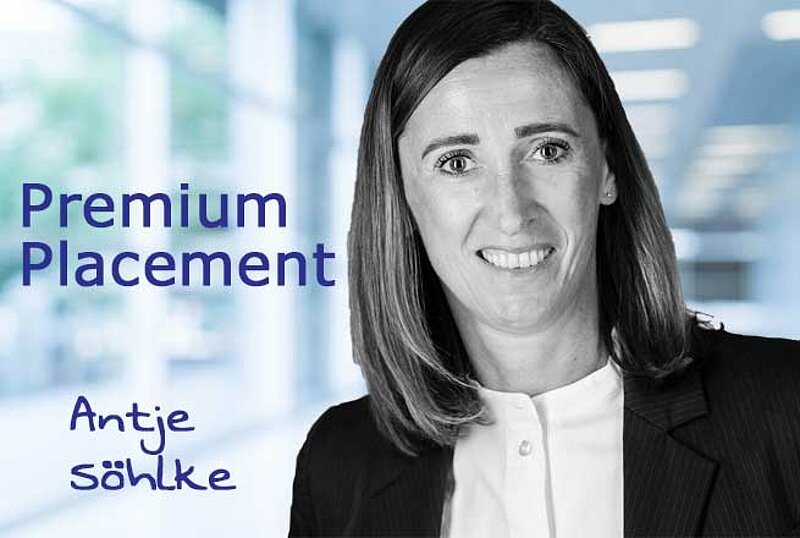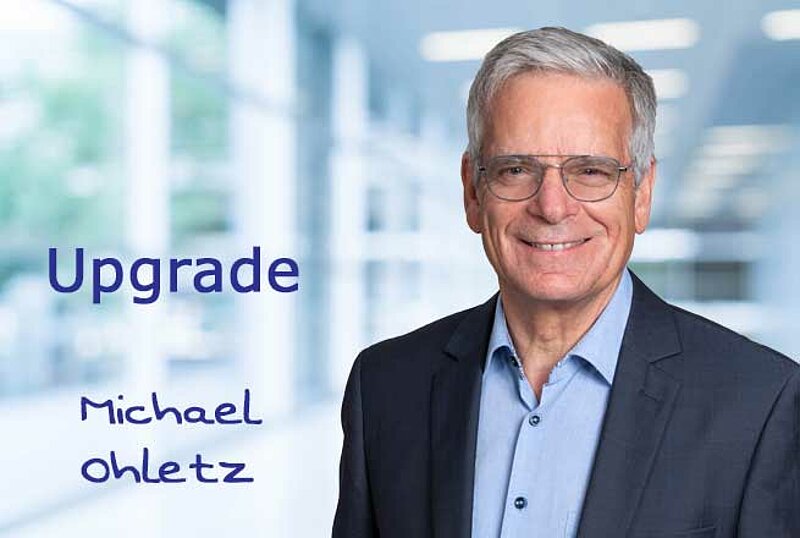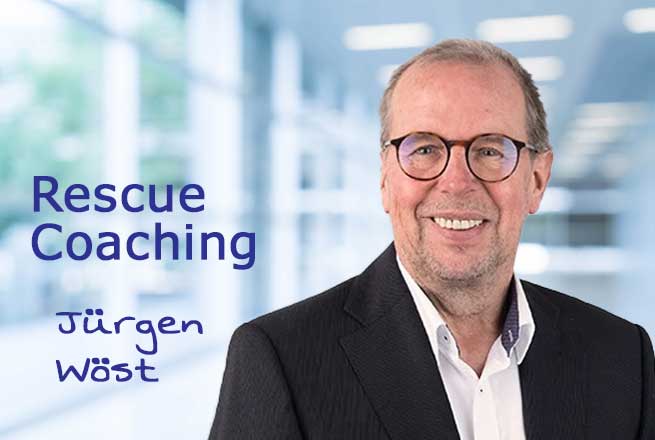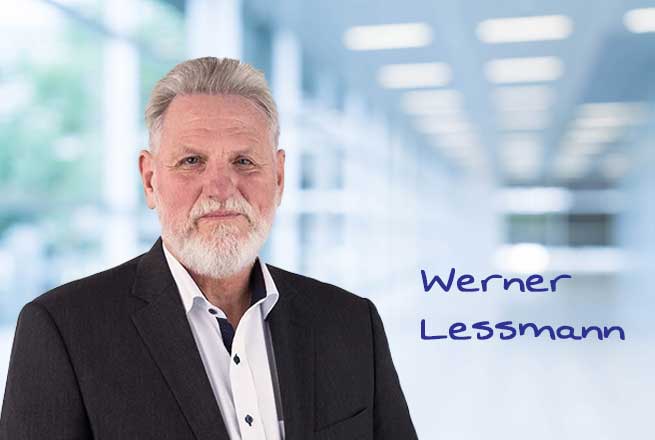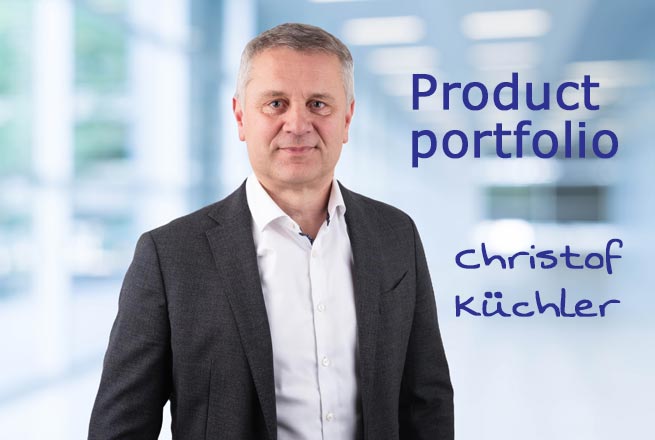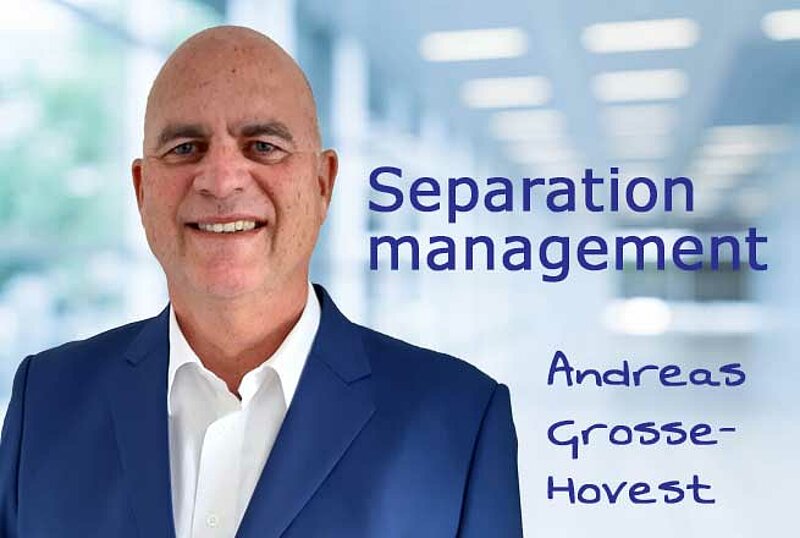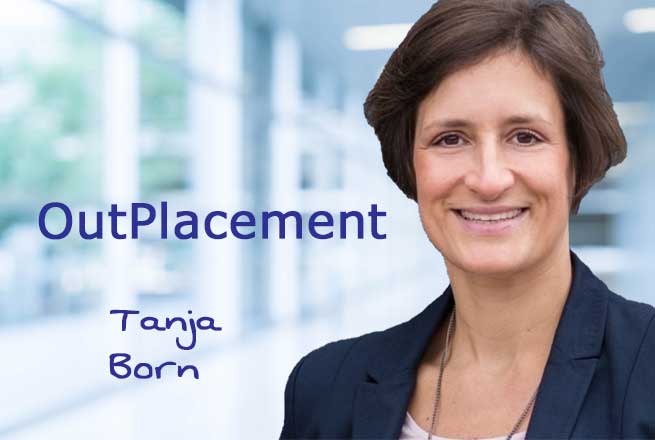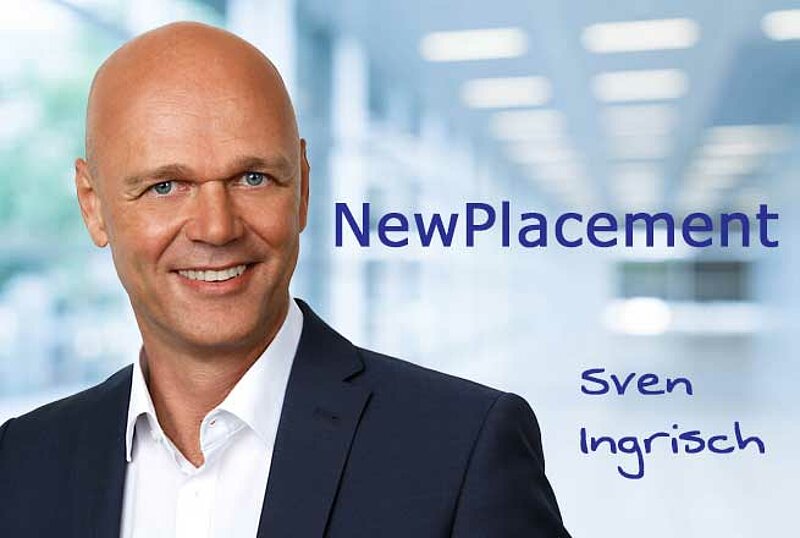PremiumPlacement for management & C-Level
Management and executives operate in an application market with many individual requirements in terms of documents (management balance sheet), networking, interview strategies and political behavior, among other things. For this reason, PremiumPlacement professionally prepares and supervises internal and external applications with a special approach and, if necessary, the examination for a change to self-employment by a management-experienced NewPlacement coach.
Table of contents
Application strategy
Special offer
Process steps in detail
Further information / personal info meeting
Application strategy
The proven application strategy in NewPlacement AG's PremiumPlacement is an individual selection of contacts to company committees (reactive/initiative), selected headhunters (reactive/initiative), the company's own network (information gathering only) and networking NewPlacement AG, PersonalAG and partnership as well as hybrid recommendation marketing by third parties and professional digital ego. The approach is always based on the demand situation in the target company, mirrored with the biographically compiled management balance sheet (integral) for matching with a high probability of success and security for both sides.
Target group: Board members, managing directors and C-level / VP
Contact in the application process: Supervisory board, advisory board, shareholder, owner, holding company, private equity, headhunter
Coach requirements: High-level management experience from the business world, partnership with recourse to tandem coaches, psychological background, separation experience
Offer: PremiumPlacement Success & Guarantee / phase model (goal setting, modules, success, guarantee) / tandem coach
Special program offer
Background: Professional support for professional reorientation for a fee has developed rapidly in Germany, as C-level and managers with an expectation of a 7-figure salary until retirement demand appropriate support and security. Mistakes in the separation phase or professional reorientation can quickly have 6-figure consequences due to longer search times or concessions in strategic future planning.
The job pyramid is narrowing considerably for positions for board members and managing directors. Finding a new position at top level in narrow job markets, around 75% of which are in the unpublished sector, requires a great deal of experience and excellent access (also known as inverse headhunting or job hunting).inverse headhunting or job hunting to owners, supervisory boards, advisory boards, holding company management boards, foundation boards and headhunters.
Solution: At this top level, considerable demands must be met in terms of application strategy, positioning, approach and individuality. In the proactive area towards the company, access must be via the decision-makers as the face in the crowd. This is where our referral marketing, in which a third party brings you into play in the right position, proves its worth. At your level, the risk of "burning" networks and contacts is extremely high. That is why we accompany your PremiumPlacement with absolute discretion and individuality, but also with a great deal of creativity. Due to confidentiality and individuality, we do not organize group meetings or events for our candidates at this level.
For managing directors and C-levels, the PremiumPlacement process can also be expanded to include other individual tools:
- Tandem coaching (experienced head coach with changing industry and specialist coaches if necessary)
- Research in relation to position, industry, owners, supervisory boards, advisory boards and potential colleagues
- Project-related and phase-specific individualization of interview documents (re-briefing, strategy)
- Individualized job search, inverse headhunting
- Referral marketing
- Office organization
Process steps in detail
01. desire to change
"goal setting"
There are many reasons for a desire to change at the C-level. Unfortunately, these changes are often made for ad hoc emotional reasons. Therefore, before the project "change", one should make a goal finding with a management-experienced NewPlacement-Coach. In this process, the management integral is ascertained and reflected upon. This results in the benefit analysis and the final target identification, which can often be in the current company, even after some changes. In the process, however, the "grievances" that have led to the desire for change also become clear. We often experience a "away from instead of towards", which is not a sufficient motivation to change. If the current job largely corresponds to one's own utility values, the "warnings" must be analyzed and, if necessary, an appropriate "disruption" strategy from the meta-level must be jointly designed. However, if there are "irreconcilable" KOs in the comparison, the change process must be started secretly or even with an announcement.
02. Separation prevention by the company
"Keeping competence carriers"
Companies that fear the loss of one of their C-levels or, where an executive has already expressed his intention to change, should contact us preventively. An "internal" coaching by evaluating the management integral and present or hidden disruptive stimuli by a NewPlacement coach and reflecting afterwards. The subsequent utility analysis reveals the discrepancies with the current job, if any, and leads to proper goal setting for both parties. If the "disruptive stimuli" are identified and thus "almost" banished, the C-Level can continue his job with coaching on demand until further notice. If the strategy for a joint relaxation of the cooperation with the company does not turn out to be long-term, the change is prepared in parallel. The C-Level starts the application process with the NewPlacement coach and is ideally available to the company until the successor has been trained.
03. The separation process
"Parting with decency"
The separation process should never harden, because then both sides lose. NewPlacement AG's set screw model provides a very good basis for a win-win. A professional separation is characterized by fairness, future orientation and relaxation. Court disputes unnecessarily drag out the process and block both sides. In the separation process, the many positive commonalities between the company and those affected are far too often forgotten. Especially at the C-level, one expects a constructive discussion with the responsible bodies without smashing china. The NewPlacement-Coach also prepares the executive to approach the separation drivers. Because at this level, in the later application process, these personal references are indispensable. An inharmonious separation does not bode well for a later separation in the new job. Independently of it, who carries the fee for the PremiumPlacement, makes itself the NewPlacement-Coach in principle for a fair and future-oriented separation strongly.
04. Management-Integral
"founded self-confidence"
Even if the candidates urge for fast first applications, first the basis for a successful process must be put. For this purpose, the NewPlacement coach and candidate work out the management balance sheet with up to 200 performance, experience and competence values, individual strengths and weaknesses, comprehensible motivations as well as the career path. In the process, the candidate's own image and that of others are harmonized, priorities are aligned with the demands of the target company, and a "success story" is generated. The subsequent feedback from the NewPlacement coach provides the candidate with completely new perspectives on his or her offer to the job market from a meta-level. This helps for the later matching between his offer, the respective demand of target companies and the sensitivities of the decision makers. Only those who have fully internalized their own product can convince others of it. Therefore this intensive preparation with the NewPlacement coach is indispensable and gives in the application market the necessary competition projection.
05. Use value analysis and goal identification
"The direction must be correct"
By the management balance, which was compiled with the NewPlacement coach, the candidate becomes conscious of its own use values in the job. From his diverse consulting experiences and the constant exchange within the NewPlacement partnership, the coach is very helpful in finding the factors. After prioritization and comparison with the current or previous job, pitfalls and opportunities become visible. It also becomes clear why the previous job had no future. Even terminated candidates often become aware that the separation by the company only preempted them. This makes it easier to deal with the new start. In any case, it also becomes clear what to look out for in the future with the target company and decision-makers right from the start. On the basis of this elaboration, the goal setting for the candidate becomes much clearer and avoids over- or underestimation.
06. Positioning
"Setting up for the application market"
Setting up for this TOP level requires special preparation. In the first phase, the headhunters who are usually called in for these searches must be convinced of the match. However, since many of these projects are not publicly advertised, the unsolicited application must reflect a quickly recognizable and broad spectrum of the candidate. This is where NewPlacement AG's 3-dimensional presentation has proven its worth. Here the headhunter is offered - instead of the 1- or 2-dimensional representation - the quick overview, with the possibility of going into depth. This ensures maximum matching of different projects. Thereby, the positioning of the candidate for matching with the intended position in the company also becomes clear. Before passing it on to the decision makers in the company, the document should be individualized according to the requirement factors for a strong matching.
07. Application strategy
"Different runways to success"
At this TOP level, a medium-term application strategy must be set up together with the NewPlacement coach before the start. The proven rule from Marketing & Sales "Operational follows strategy!" also applies in this area. Operational ad hoc attempts can jeopardize success due to deviating application information. Now that the positioning and the line-up (see posting 6) are in place, the contact persons have to be defined in the time sequence. The unpublished projects can usually be found at the headhunters, who are contacted on the initiative. Here, the selection requires a lot of experience, because at the TOP level, confidants of the owners or the boards outside of the large headhunting companies are also frequently commissioned. The secret projects within the companies are best approached through recommendation marketing via third parties to the decision-makers in the companies (owners, committees, holding company, etc.). Information about suitable vacancies from the network of candidates or the partnership of NewPlacement AG is also best approached through referral marketing. These runways are then joined by reactive applications and a professional digital ego that goes far beyond social media.
08. Initial interviews
"Ignite the spark"
Initial personal interviews pursue clear objectives. When contacting the headhunter, comprehensible TOP matching points must be conveyed. This enables him to take the next step with his client. In advance, all concerns for the headhunter that he could jeopardize his customer contact with the introduction must be dispelled. This includes comprehensible change motivations, if necessary counter offers to hold and coherent references. In summary, this results in a target for the initial interview with a high degree of matching, risk-free recommendation and promising closing potential.
The initial interview with the decision-makers in the company reinforces the target from the interview with the headhunter "at first hand". The NewPlacement coach focuses the success talk on the demand factors and thus achieves a maximum of interest and matching. The upcoming challenges are evidenced by the own professional experiences and give security. The participation of the predecessor in the interviews requires particular skill with regard to one's own submissions on continuation or change in the area. The upcoming "chemistry test" can be positively influenced by professional research. The only objective in the company is the matching, security and continuation of the talks.
09. Validation talks
"Empathy, politics and diplomacy"
The continuation or validation talks up to the contract talks in the company serve the security of not risking a wrong appointment. In the process, the group of participants on the company side is often still adjusted, up to discussions with owners, their family or corresponding committees (supervisory board, advisory board) or even advisors to the family. Each participant brought in wants to justify his participation. Appropriate preparation for all participants of the discussion rounds is indispensable. In the past, for example, the owner of a consulting firm of the target company has arranged for the talks to be broken off because he saw his continued employment for the company in jeopardy. In another case, the owner's wife argued for the talks to be terminated because she felt that her area of responsibility had not been sufficiently taken into account in the talks. In the context of these interviews, the highest level of preparation, empathy, and politics and diplomacy, in addition to the required technical knowledge, is required of the applicants. Basically, a real foretaste of later integration in the company, in which the NewPlacement coach also assists.
10. Contract negotiations
"Into the company's moccasins"
A distinction is made between service contracts for board members and managing directors and employment contracts for C-levels. In order to build in the probationary period in service contracts, interim contracts are also concluded. All the intensive claims regarding duration and security on the part of the new executive unsettle the company. The massive demand for longer notice periods or extended terms also raises doubts as to whether the new executive is 100% convinced of future success. The split between fixed compensation and variable component demonstrates persuasiveness and expresses involvement.
Exceptions to company agreements regarding company cars, means of transportation and hotel budgets as well as vacation arrangements for the entire company should not be addressed at this stage with their own exceptions.
The choice of company car should not be based on personal preferences, but rather as a figurehead for the company, the position and consideration for the vehicle of the owner, for example. The preference of the owner e.g. to plug-in hybrids should be followed in the own choice.
The contract negotiations should be prepared decidedly with the NewPlacement-Coach. In the phase of the contract conclusion - without coach - already so some projects with the retreat of the enterprise were terminated.
11. Onboarding
"Fear of change"
No attitude is observed in the coworker circle so closely as the new entrance of management and C-Level. On the one hand, the new executives want to set an early example for owners, boards, etc., and reinforce certainty in these ranks about the hiring decision. On the other hand, the employee group is afraid of changes that might overwhelm them personally or even affect their jobs. In this context, the inaugural speech, which is developed together with the NewPlacement coach, plays an important role. However, this must then be followed by corresponding actions.
As part of the "job insurance", we repeatedly warn our candidates against micromanagement, which unsettles employees, demotivates them and increases their fears. Within the first week, the manager should take enough time to get to know colleagues and the next reporting levels (top down). In this process, monologues are detrimental. That's why we have established a 5:55 rule of listening for 55 minutes per hour and taking notes in the 4/5 split.
In doing so, we pay particular attention to informal lines within and outside the company, especially to the owner family, committees or decision-makers in the holding company. The principle of "learn first, teach later" motivates all those involved to transfer the necessary knowledge. In general, constant contact with the NewPlacement coach should be maintained during the fragile phase of onboarding.
12. Establishing oneself in the new job
"The first 100 days"
From politics, we know the 100-day period in which one should have established oneself to the extent that one can completely fill one's position. This period is often much shorter for executive and C-level positions in business. The intent for hiring is often rapid change, which provides additional security for hiring decision makers. In the first 100 days, executives quickly become aware of the different needs for change due to the "lack of operational blindness." However, it has not proven effective to change all issues immediately and in parallel, causing considerable uncertainty among the workforce. After researching the need for change, it is advisable to establish priorities based on the criteria of economic success, industrial peace (fear in the workforce, works council), chance of implementation, time span and degree of impact. Then a timetable should be defined in which the change requirements are to be implemented over a period of time far beyond the 100 days. This strategy must be coordinated with the owner, supervisory board, holding company and, if necessary, works council before implementation.
The next step is to involve the next management levels and define their shares in implementation. Of course, the strategy must be regularly scrutinized and, if necessary, adapted or the operational implementation adjusted.
13. Coaching on demand I
"The first year"
After onboarding and integration, the change from improvisation to permanent organization takes place. Support for the workforce in the change process has become established. The strategy shows its first successes. Competencies within the company are regulated and stable. Everyone is pulling together. The working atmosphere has improved noticeably. The owner, supervisory board and holding company feel that their hiring decisions have been sustainably confirmed. The regular discussions with the NewPlacement-Coach serve rather to avoid lulling oneself into a sense of security and to prevent old problematic behavior of the past from returning.
Unfortunately, the first year does not always develop so easily with the executives. Here, in the 360-degree view, one has to look mainly at four interfaces:
- Owners, supervisory bodies, holding
- colleagues at the same level, foreign subsidiaries
- employees, works council and unions
- external partners (customers, suppliers, service providers).
In the past, all these interfaces were triggers, drivers or responsible intriguers of separations in the first year.
14. Coaching on demand II
"Owners, supervisory bodies, holding company"
The most frequent disruptions in the interaction with owners, supervisory bodies and holding company result from "interference" or micromanagement. Even among the controlling bodies, which are prohibited from any operational management, one often finds "over-management" behavior. Dealing with this kind of "interference" is difficult for many managers, especially if they do not recognize the corresponding competence of the committees. A power struggle primarily harms the company if forces are tied up by this dispute. In the case of escalation, separations often occur in the first year as well, which cause considerable damage to both the company and the executive. If it is the first management position, the executive is caught between two stools after the separation: he or she is overqualified for activities below and has "failed" within the management. Involving the NewPlacement coach at an early stage can take the edge off the situation. Usually, political and diplomatic behavior on the part of the management can then significantly improve the cooperation and consolidate the position. Viewing the situation from the "lost" meta-level, which the NewPlacement coach helps to achieve, defuses the dangerous emotionality of "battling it out".
15. Coaching on demand III
"Colleagues, foreign branches"
If 50% of the energy on the boardroom floor is dissipated by "intrigue", the company will suffer damage and owners, supervisory bodies and holding company will have to react. This also results in involuntary separations in the first year. In most cases, it hits the last person hired, since the other colleagues can use better informal lines. There are a multitude of reasons why things get stuck in the management floor. Therefore, the NewPlacement coach should be involved early on to analyze the situation together. As a rule, colleagues feel restricted and are, for example, affected by new projects, wanted to use the change to expand their own area, want to protect employees from the manager's area, are jealous of the proximity to the owner, supervisory bodies and holding company, or are disappointed that the spokesperson role did not fall to them after the change. Through timely political and diplomatic activities, one can address and pacify the analyzed "annoyances" of colleagues. To this end, one develops appropriate strategies and implementations together with the NewPlacement-Coach.
Leaders of foreign companies are a special case, as they are usually "free to create" in their country. If this has to be restricted for a given reason, a common phalanx should not be created.
16. Coaching on demand IV
"Employees, works council and trade unions"
During onboarding, the manager has already sent a first signal to the employees and their representatives. Following the motto "first learn, then teach," the get-to-know-you meetings have worked individually with the direct reports. In the first group jour fixe, however, a common "front" can emerge, which is met with individual jour fixes. In the process, "the dismissive attitude" usually crumbles in the first month. Direct reports, which had hoped for the position, must be observed with a high degree of attention. Their informal lines have harmed many executives in the past. After observation and exchange with the NewPlacement coach, the decision should be made in the direction of praising away or promoting to the deputy position. Permanent "disputes" weaken the performance of the executive.
One should approach employee deputies already in the first round of getting to know each other. One meets the immediate demands best with the reference to "the priority inhalation of the enterprise and their entire intelligence" in the next weeks. Nevertheless, you should encourage regular exchanges, but basically involve the HR manager in the process. It is also essential to include the previous history in terms of work disputes and resignations in the integration phase in order to be able to better assess future consequences.
17. Coaching on demand V
"External partners (customers, suppliers, service providers)."
The company's external partners have often built up informal lines to owners or supervisory bodies over the years. These are rigorously used to protect their own interests. Any external partner who sees his or her business threatened by the new executive will use his or her contacts to get the executive to relent or even pursue his or her exit. Therefore, it is imperative to pay close attention to statements about these connections during the get-to-know-you round. With the NewPlacement coach, a strategy should be developed for dealing with the individual external partners. If necessary, an internal coalition can help to get rid of disagreeable external partners. Special attention must be paid to "friends" of the owner who may even have been involved in the hiring process. It is more likely that phalanges will form among customers towards the new manager. Ride-alongs with the sales force and intensive listening can expose problem areas that require political and diplomatic action.
18. Wrong Decision and Update
"Professional Development"
Despite paying attention to all the matching components before signing the contract, the new position may turn out to be a misunderstanding or wrong decision in the first 100 days or by the end of the probationary period. With the NewPlacement-Coach a benefit analysis must bring clarity over the further procedure before rash activities. In the first step, change possibilities are examined, which can save the commitment if necessary.
There are however topics, which can hardly be influenced. For example, the owner cannot follow through with the promised letting go and even intensifies his micromanagement, or long-serving managers join forces and pursue separation from the "unwanted" manager. In these cases, the engagement should be classified as an "interim job" and the application process should be restarted overtly or covertly.
Further information
On our website you can find out more about the extensive
o internal career directory
o FAQ on OutPlacement
o Interviews OutPlacement & Career
o FAQ of the companies
and the horizontal sliders provide very quick information on all phases of career development and professional change.
For an individual and personal assessment, please arrange a free, no-obligation information meeting with your future coach.
Contact by phone, e-mail or contact form
We guarantee all interested parties absolute confidentiality, non-disclosure of your data and security in accordance with our privacy policy. You can also contact us anonymously. We vouch for this with our more than 30 years of tradition.

